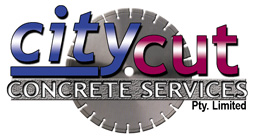Safety Guide for Concrete Sawing and Concrete Cutting
Concrete cutting and drilling are fundamental processes of making holes in concrete floors, walls or any other paved structure or surface. For most concrete cutting companies, these are basic services, usually in high demand of cutting tools, concrete drills to provide ready solutions for many common construction problems. Concrete core drilling is the process of drilling precise, clean holes in concrete walls and removing a solid core rather than pulverize the concrete. Anyone who has ever tried concrete cutting or drilling will tell you that dust and noise are the two biggest deterrents and health damaging components for this job. The dust is a consequence of hazardous materials and the high noise can damage hearings. Thus, it is crucial to undertake work in the most precise and most secure manner.
Make sure the concrete cutting company you hire implements proactive steps to ensure utmost safety during the operation.
Noise at high levels is dangerous to health, potentional causing hearing loss. Construction activity can result in different degrees of ground vibration, depending on the tools used and methods employed. Ground vibration from construction activities such as breaking and drilling can cause an arm vibration syndrome, back pain and musculoskeletal disorder. These consequences usually follow many years of exposure, but exceptionally high exposures over a few months can also be responsible.
Special protective equipment can reduce exposure, as long as equipment is selected, fitted, and used correctly. For this reason, some form of respiratory protective equipment (RPE), usually in the form of a mask, can provide different levels of protection. OSHA issues standards for Respiratory Protection (29 CFR 1910.134) and Eye and Face Protection (29 CFR 1926.102). Although following these rules is a step toward ensuring workers’ safety, current thinking and newer workplace safety codes suggest it’s also necessary to use engineering controls on power tools to collect and dispose of dust. This is especially important for dust-intensive maneuvers such as cutting and grinding. Personal protective equipment (PPE) should be provided for all workers who are cutting and drilling concrete. All PPE should be consistent with the relevant Australian Standards. People that are working on a site should also be instructed in how to use the equipment correctly. Every concrete cutting company has a duty to ensure all workers receive proper training lessons and supervision to perform their work safety. As we mentioned before dry cutting and drilling can generate large amounts of dust including respirable silica and other toxins that can quickly reach dangerous levels when operated in enclosed or unventilated areas. To protect themselves, if possible workers should employ wet cutting methods which produces less dust in the air, to prevent the spread of silica dust.
Excessive noise from concrete cutting operations can certainly damage the hearing of operators in the area over a relatively short period of time. To resolve this, whenever practicable workers may use drilling or cutting equipment instead of hand operated tools. Training’s and working instructions are complementary part of every working process for proper tool maintenance so the equipment can be held or manually supported to vibrate less. All these precautions must be taken seriously to avoid hazard at the work site. Last but not least there is a greater risk of injury if the operator is working alone so he cannot bee seen or eared by another person or supervisor. To avoid this risk operators must not work alone when developing safe systems of work. Every concrete contractor should provide communication systems to enable workers communicate and ask for assistance if anything goes wrong.

